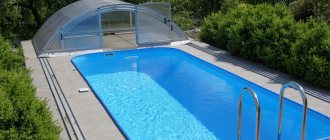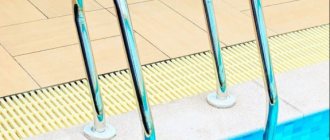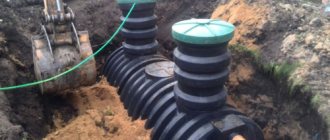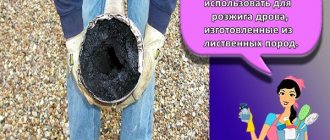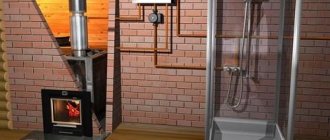Do you want to enjoy swimming in your artificial pond every day without fear for your health? Then you will have to carefully monitor it and regularly clean the water. A properly carried out cleaning process allows you to destroy all bacteria and other harmful microorganisms living in the aquatic environment, which can turn normal water into a substance with an unpleasant odor of an indefinite hue in a short time.
So, let's talk about the most common and effective methods for purifying the aquatic environment in artificial reservoirs.
Think ahead
A properly built pool already provides means of protection against pollution - these are skimmers - pumps that are equipped with filters and work on the principle - they suck in dirty water, pass it through the filters and release clean water. All stationary pools are equipped with such a water treatment system. Moreover, you can choose the number of skimmers and how to install them. But, as practice shows, even with the installation of several such pumps, only half of the water in the pool is cleaned. How to purify the water completely so that instead of health and vigor, you do not catch any diseases? This question is especially relevant in the summer for pool owners:
- large volumes;
- street type;
- without roofs.
The cost of a skimmer for a stationary pool ranges from 1,500 to 20,000 rubles, the cost of a mounted skimmer is 1,300 to 15,000 rubles. The cost of pool pumps varies from 9,781 to 175,038 rubles.
Bringing the pH level of the water to neutral
The neutral pH level of water is beneficial not only for the human body, its skin, hair and mucous membranes. Water with a neutral pH is unfavorable for the development of harmful microorganisms and causes minimal corrosion of installed equipment. The use of different reagents and disinfectants can significantly affect the pH of the water, so it is useful for any pool owner to have a pH meter in their arsenal to control the acidity level of the water and pH regulators (to increase or decrease the acidity level).
Let's start with the simplest
Every pool requires cleaning at least once every two weeks. The simplest thing you can do:
- use a net to remove large debris from the surface of the water;
- use brushes to wipe away deposits on the walls of the pool;
- Use special sticks with different attachments to wipe the bottom of the pool.
Some manage to clean the pool in this way without draining the water and without special devices, using simple rags, soft brushes, mops, etc. There will be little benefit from such cleaning, because the collected deposits from the surface of the pool will not rid the water of microbes and microalgae. Therefore, it is better to use other methods of cleaning the pool, such as:
- water vacuum cleaners;
- bottom cleaning robots;
- vacuum cleaners with various attachments for cleaning the walls and bottom of the pool.
This equipment is not cheap, but has a long service life. Moreover, these devices will eliminate your physical labor - they will do almost everything for you. But even the best water vacuum cleaner with the most convenient attachments will not be able to disinfect water and rid it of harmful microorganisms; this requires other types of pool cleaning.
The most inexpensive vacuum cleaner for a pool can be purchased for 2,000 rubles. An expensive option will cost you almost 900,000 rubles.
Mechanical method of purifying pool water
Mechanical pool cleaning is very common. What is she like? Firstly, this includes all kinds of scrapers, brushes, nets, etc. With this tool you can catch insects, leaves, and some grass. The process is labor-intensive, unpleasant, but necessary. Believe me, the net will become your permanent cleaning tool.
The use of special robotic vacuum cleaners can be considered more advanced in this matter. They are easy to clean the walls, bottom, sides, and of course – the water itself. They come in different types and modifications, but they work on the same principle: they pass water through themselves, purifying it. Such vacuum cleaners greatly facilitate a thankless procedure, and cleaning the pool does not become a burden. There is more information about them in this article.
The third point is the use of filters. Filters for cleaning pools should be used on every “water body”. It’s simply impossible without them. The water passing through the filter elements becomes much cleaner and more transparent. Filters, in turn, are sand and cartridge type.
Sand filter pumps are a container filled with fine, specially prepared quartz sand. Passing through sand, water is purified from various mechanical impurities. Over time, approximately once a week (many factors influence), such a filter must be cleaned, since dirt settles in the sand and the filtering ability noticeably deteriorates. Cleaning involves passing water in the other direction. This procedure is called the "reverse cleaning" process. Sand filters are great for small reservoirs.
Robot vacuum cleaner for pool
Sand filter
Filter with cartridges
Cartridge filters are containers in which the role of the filter element is played by special removable components (cartridges). As the cartridge becomes dirty, it is simply replaced with a new one or washed well under running water. The option is not very expensive, but very effective. In some cases, cleaning a pool with such a filter is much better than with a sand filter, since the cartridge captures smaller particles than sand.
Long-known cleaning methods
The most common and familiar method of purifying pool water from childhood is chlorination, when ordinary bleach is added to the water in certain proportions. But this is an unpleasant odor and allergic skin reactions, which forced many to abandon this well-known and proven method of disinfecting pool water. Well, I don’t want to darken my country holiday with the smell of bleach or its chloride derivatives. There are many other types of pool water purification, which, like chlorine, have unique properties:
- antibacterial;
- antivirus;
- antiseptic;
- preventive.
The cost of liquid chlorine for swimming pools depends on the volume of the purchased canister: 5 liters. – up to 350 rub., 10 l. – up to 600 rub., 20 l. – up to 900 rub., 30 l. – up to 1,250 rub.
A wide range of consumers use a derivative of chlorine - less caustic and more adaptive for people’s sensitive skin - series A hypochlorite. This substance must be put into water in certain proportions, as indicated on the packaging; too much can also cause negative reactions in the body. This product is at least odorless and is used in tablets.
In addition to tablet or powder products, there are numerous gels, solutions, mixtures for disinfection and purification of pool water. But they are all chemicals to one degree or another. This means that they also have negative properties that have a destructive effect on the skin.
The cost of series A hypochlorite varies from 600 to 1,250 rubles. depending on the volume of the canister. Canisters can be 10, 20 and 30 liters in volume.
Chemistry for swimming pools
Disinfection of swimming pools with chlorine is the most common, but far from the only cleaning method. For complete water treatment, sand filters are used to capture large contaminants and special additives:
- flocculants that cause small particles to stick together;
- coagulants, under the influence of which dirt falls into a flaky sediment;
- algaecides that fight water blooms;
- pH regulators, which control the acid-base balance.
You can purchase any liquid pool chemicals in our online store. The company's product range includes certified detergents, disinfectants, lightening agents and removal of various deposits. Delivery is carried out not only in Moscow, but also to any regions of Russia.
Innovative methods in water purification
Progress has stepped far forward, and today, if we have the funds, we can purchase high-class equipment that has certification and guarantees for at least 3 years, purifying water based on ionization. All this equipment can be divided into 2 types:
- powered by electricity;
- autonomous.
Electrical equipment of an innovative modern type includes devices based on beneficial antimicrobial actions:
- silver;
- magnesium;
- chlorine;
- copper
All new generation equipment operates on the basis of ionization of elements and supplying water with these useful ions. Thus, a chlorine-generating apparatus breaks down table salt, which needs to be added periodically, into microelements, releases chlorine molecules and supplies them to the water in the pool. At the same time, the smell of chlorine is not felt at all, and the water is slightly salty. The device can work uninterruptedly for months.
The cost of a chlorine generator for a swimming pool varies from 7,000 to 30,000 rubles.
Equipment that releases silver ions works on the same principle. As you know, silver has antiseptic properties. There are many medical studies that prove that silver helps bones and skin heal and recover fifty percent faster. By the way, colloidal silver is a traditional medicine used by humanity since ancient times. And when it gets into the water, it becomes much cleaner. Some home swimmers purchase 2 devices and install them at opposite ends of the pool. Innovative methods of purifying pool water activate the beneficial properties of water so much that, as the owners of this innovative equipment themselves say, you can even drink the water from the pool.
Chlorine-free disinfection systems (ionizers) themselves are expensive. The cost of some models can reach up to 2,000,000 rubles.
A wide variety is also presented in cleaning devices based on magnesium. There, magnesium crystals also break down into molecules and effectively clean and disinfect pool water. We all remember how powerful an antiseptic and fighter against microbes of various levels is potassium permanganate. But it has a bright purple color and an unpleasant odor. This equipment, using the most valuable properties of magnesium in the fight against viruses and microbes, ionizes the chemical element and saturates the water with these ions.
This equipment operates using electricity and has a high effect on water purification in the pool.
Baths, saunas and swimming pools
63 votes
+
Vote for!
—
Vote against!
To ensure that you can swim in the pool without danger to your health and that the water in it is clean for a long time, it is necessary to periodically clean the pool. Properly carried out cleaning of the pool will allow you to get rid of the main enemy of all artificial reservoirs - microorganisms and bacteria, which in a fairly short time turn clean water into a strange-smelling liquid of incomprehensible color. In this article we will tell you about ways to purify pool water.
Content:
- Mechanical cleaning of swimming pools
- Chemical water treatment
- Chlorination video
- Disinfection of water with active oxygen
- Bromination of water
- Electrophysical pool cleaning
- Purifying pool water with ozone video
- Water purification by ionization with silver and copper
- Ultraviolet water purification
- Some recommendations for monitoring water quality in artificial reservoirs
Mechanical cleaning of swimming pools
Filters for pool water purification will help rid the water of various mechanical impurities and organic matter. In particular, we are talking about small debris, insects, dirt and dust.
When choosing a filter, pay attention - the installation should be capable of passing the full volume of water through itself about six times a day. Before purchasing a unit, you need to decide which type is best for you. Thus, the highest degree of water purification will be provided by a diatomite filter, in which granite backfill and diatomite sand are used as filter materials. But the most popular, due to their inexpensive cost, are sand filters, where water is purified using gravel and specially sifted quartz sand. There are also cartridge filters that are easy to use.
To cope with contamination of the walls and bottom of the pool, you will need a special underwater vacuum cleaner. They are also divided into several types - manual and automatic. Hand-held underwater vacuum cleaners are inexpensive and are usually used for cleaning collapsible and inflatable reservoirs. To clean the bottom and walls of the pool using such a vacuum cleaner, you just need to connect it to the filter.
Automatic vacuum cleaners have more power and are typically used in larger swimming pools.
Of course, mechanical cleaning of the pool can be done by hand, using special deep and surface nets for collecting debris, brushes and telescopic rods.
But, no matter what method you choose for mechanical cleaning of the pool, it cannot solve problems with microorganisms. This means that the pool water can still develop a very strange color and smell. And to prevent this, it is necessary to disinfect the water in the pool.
Disinfection of pool water
Chemical pool water purifiers are the most effective way to get rid of germs. Such products can be used to disinfect water using bromine, active oxygen, chlorine, as well as to maintain normal pH levels and to prevent the formation of algae, cloudiness of water and lime deposits.
Chlorination of water
Water chlorination is considered the most reliable reagent method of disinfection and is based on adding chlorine-containing substances to water.
Among the advantages of this method are: guaranteed elimination of most pathogenic microorganisms known to science, prolonged action and inexpensive cost.
Disadvantages of chlorination: the constant need to combat toxic chlorination products formed in water, the inability of chlorine to get rid of spore-forming microorganisms, and the “addiction” of pathogenic microbes to a certain level of chlorine in water. Due to the latter drawback, from time to time it is necessary to treat the pool water with increased doses of chlorine.
Those who prefer this particular method of water purification are recommended to combine chlorination with other disinfection methods, which will allow them to obtain the maximum disinfection effect without harm to health.
Disinfection of water using active oxygen
Disinfection of water with active oxygen is carried out by injecting an oxygen-containing reagent into water, where it decomposes and releases oxygen that reacts to biological contaminants.
The advantages of this type of disinfection include:
- Safety – does not contribute to the formation of harmful by-products;
- Lack of chloramines, which can lead to irritation of the skin and mucous membranes of the eyes;
- Efficiency.
Disadvantages include:
- High cost compared to chlorination, but the latter cannot be completely abandoned. From time to time you will still have to purify the water by chlorination;
- The use of higher doses is required, since the oxygen-containing reagent decomposes quite quickly in water and is characterized by low activity;
- In case of an overdose of an oxygen-containing reagent, much greater harm is caused to health than in the case of an overdose of chlorine.
This water purification method is not suitable for large and outdoor pools.
Bromination of water
Bromine, like chlorine, is a strong oxidizing agent and halogen, so it is best used in combination with other drugs.
The disadvantages of this water purification product include the high cost of bromine preparations and relatively low efficiency. Thus, bromine may not be able to disinfect large amounts of water.
There are far more advantages to bromination of water than disadvantages:
- lack of characteristic odor;
- does not increase water hardness;
- prolonged action;
- provides reliable disinfection;
- does not cause irritation to mucous membranes and skin and does not form toxic substances;
- kills microorganisms, fungi, bacteria and viruses, and is also more effective in combating algae.
Electrophysical purification of pool water
If you do not want to use chemicals when cleaning pool water
Pool water purification with ozone
Ozone is inherently a reactive form of oxygen and the most powerful oxidizing agent that destroys viruses, spores and bacteria. Water purification with ozone can be equated to multiply accelerated natural water purification. Moreover, the effectiveness of this method is many times higher than the effectiveness of chlorine or oxygen, but ozone does not leave any odor, nor does it irritate the mucous membranes of the eyes and skin. You should not worry about an overdose of ozone, since this will not cause the formation of additional chemical compounds and foreign substances, and after the end of treatment, all ozone will simply turn into oxygen.
When treating large pools, it is recommended to use an ozone generator in conjunction with a chlorine station. With the help of ozone, the water in the pool will be effectively disinfected and transparent, and maintaining a low concentration of chlorine will prevent the growth of pathogenic microorganisms.
Although ozonation may seem like an ideal option for water purification, it also has its disadvantages:
- does not accumulate in the aquatic environment, and therefore does not have a prolonged effect;
- expensive compared to chlorination;
- at high concentrations, inhalation may cause damage to the respiratory tract, mucous membranes and lungs;
- Only the water passing through the device is disinfected, while both the surfaces of the pool remain a risk factor.
Scheme for purifying water in swimming pools using ozone:
Water purification by ionization with silver and copper
Ionization is one of the most modern methods of water purification in artificial reservoirs. The water is purified by silver or copper ions, which are released under the influence of current in the electric water block. Honey ions prevent the growth of algae, and silver ions purify water from viruses and bacteria.
Advantages of ionization:
- no odor;
- does not cause allergic reactions;
- after ionization, the water quality corresponds to the drinking water quality standard;
- prolonged action;
- the ability to completely abandon chlorination, provided that an ionizer is combined with an ozonizer.
The disadvantages of this method include the fact that until today scientists have not been able to fully study the effect of ions on the human body. This pool water purification system does not combine well with other disinfection systems.
Ultraviolet water purification in the pool
UV irradiation of water is currently the most promising reagent-free method of water disinfection. Ultraviolet water purification is highly effective, and microorganisms do not develop resistance to radiation. This method of disinfection does not cause harm to health, since even with an overdose it does not change the chemical composition of water and does not cause the formation of chemical compounds. In addition, UV irradiation of water is a fairly economical method of disinfection.
The disadvantages of this method include the need to constantly monitor the level of iron in the water. Also, UV disinfection does not have a prolonged effect and works exclusively at the time of irradiation.
Also, the water in the pool can be disinfected using ultrasound. Ultrasound can rupture the membranes of microbial cells and destroy some chemical compounds. At the same time, this disinfection method is expensive and difficult to maintain. This is one of the newest methods of water disinfection and is not yet widely used.
Another modern method of water purification is using salt electrolysis. In such water purification systems, a chlorine-containing reagent is produced by electrolysis from a solution of ordinary table salt. Currently, there are two types of water purification systems based on salt electrolysis - electrolysis plants that produce chlorine in a separate container and plants that operate using the flow electrolysis method.
Scheme for water purification in swimming pools using UV irradiation:
Some recommendations for monitoring water quality in artificial reservoirs
In conclusion, I would like to draw attention to some nuances that need to be taken into account by everyone who has a swimming pool in their yard.
- Using test strips, periodically check the water hardness - the indicators should be in the range of 180-250 g/m3 cubic CaCo3. If the water hardness exceeds the specified values, it is worth using water softening products, for example, Mineral Plus.
- Once a week it is necessary to check the acid-base balance of the pool environment using a special tester. The optimal pH value is 7-7.4. If the indicator exceeds the specified value, this may cause a rash on the skin, but if it is lower, then such water is considered unsuitable for bathing. To bring the pH value to normal, you should use special products marked “pH+” or “pH-”.
- When using chlorine tablets to purify pool water, you must ensure that the concentration of free chlorine does not exceed 0.3-0.5 mg-l. Otherwise, it is recommended to use Chlorine Minus.
- The smaller the pool, the faster the water in it will become polluted.
- To effectively disinfect water, a complex of several methods should be used.
Without electricity
Other ways to purify pool water without chlorine or other chemicals are devices that look like plastic boxes with slots on the sides of different sizes and are designed for an average volume of up to 30 cubic meters of water. These mini-units operate on the basis of water ionization. Ions entering the liquid, with their charges, clean and disinfect the water in the pool with maximum effect. The ions released by these units are silver, magnesium, copper and other elements, which have increased environmental friendliness and the ability to fight harmful microorganisms. These devices are simply placed on the bottom of the pool; you can put a large number of such plastic boxes - this will become a kind of guarantee that the water will not bloom or accumulate germs and viruses. It will be constantly cleaned and ionized with the help of such devices. They do not need to be connected to electricity or recharged. They are autonomous and do not require any maintenance.
The price for an autonomous ionizer starts from 7,500 rubles.
Disinfecting water
The use of chemicals in water purification is considered the most effective option for combating microbes and bacteria.
It is also worth adding that chemical reagents are successfully used as a means of preventing such undesirable processes as:
- the appearance of limestone-based deposits;
- cloudiness of water;
- algae formation.
We use chlorine
The chlorination process is deservedly considered the most reliable disinfection option using reagents. Essentially, chlorination is the addition of chlorine-containing compounds to water. This technique has a number of undeniable advantages. The main thing is that you are guaranteed to get rid of the vast majority of germs and harmful bacteria. In addition, even regular chlorination will not cost you serious money.
The main disadvantage of this method is the inevitable formation of toxic products in the water (a side effect of the chlorination process) with which you will have to deal with from time to time. The formation of these toxins is due to the fact that chlorine is unable to completely cope with microorganisms that form spores. In addition, some types of microbes are able to gradually adapt to certain levels of chlorine in the aquatic environment. In order to be sure to “kill” such microbes, you will have to use increased doses of chlorine at certain intervals.
By now, the method of water purification, which is a combination of chlorination and other modern disinfection options, has proven itself to be excellent. The advantage of this method is obvious: ensuring the maximum disinfection effect without any risk to health.
We use active oxygen
What is the process of water disinfection using active oxygen? An acidic reagent is injected into the water, which, upon entering the aquatic environment, begins to decompose and release an amount of oxygen sufficient for disinfection, which reacts to almost all types of biological contaminants.
Of the many advantages of this method, first of all, it is necessary to mention:
- the absence of chloramines that irritate the skin and mucous membrane of the eyes;
- his safety.
The process of treating water with active oxygen virtually eliminates the possibility of the formation of toxins or other by-products; — its real effectiveness, repeatedly confirmed in practice.
Now let's look at the disadvantages of this technique:
- A) It will be necessary to use increased doses of oxygen, since the corresponding reagent tends to decompose in an aqueous environment at a fairly high speed.
- B) An overdose of the reagent in this case is much more dangerous to health than in the version with chlorine.
- C) This disinfection method will cost slightly more than chlorination. In addition, it will still not be possible to completely abandon the use of chlorine.
Another important point: the disinfection method using active oxygen is not suitable for open artificial reservoirs and large swimming pools.
We use bromine
As you know, bromine is one of the halogens and strong oxidizing agents. In this context, the optimal solution seems to be the use of bromine in combination with other agents.
Purification lamps
Another way to purify water is using ultraviolet radiation. Of course, during the daytime, the water in the pool is already exposed to ultraviolet radiation - exposure to sunlight. But at night, you can additionally disinfect water with similar rays only in artificial form - using special ultraviolet lamps. Minutes of such cleaning from microbes will consist in the fact that only the water on the surface will be disinfected. The deep layers will not be exposed to artificial ultraviolet radiation.
Choose your method of purifying water in the pool, which purifies the water as much as possible and is affordable.
The cost of a UV disinfectant varies from 15,508 to 51,491 rubles.
Algae removal
The algae in the pool is not the same algae that we encounter in the sea. A nasty, slimy brown or green coating appears on the bottom and walls of pools, and the water has an unpleasant odor. In addition, such water dries the skin, since its pH reaction sharply shifts to the alkaline side. It is best to use preventive measures against the development of algae, rather than then fight them with strong and not entirely harmless drugs - algaecides. By the way, the same hydrogen peroxide successfully fights some types of algae.
